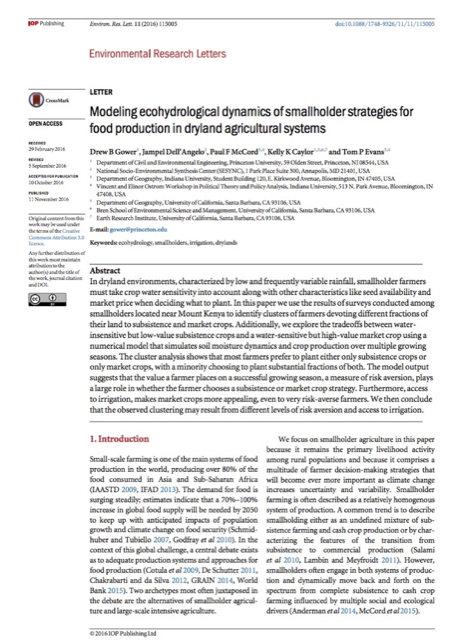Modeling ecohydrological dynamics of smallholder strategies for food production in dryland agricultural systems

Gower, D. B., Dell’Angelo, J., McCord, P. F., Caylor, K. K., & Evans, T. P. (2016). Modeling ecohydrological dynamics of smallholder strategies for food production in dryland agricultural systems. Environmental Research Letters, 11(11), 1–9. http://doi.org/10.1088/1748-9326/11/11/115005
In dryland environments, characterized by low and frequently variable rainfall, smallholder farmers must take crop water sensitivity into account along with other characteristics like seed availability and market price when deciding what to plant. In this paper we use the results of surveys conducted among smallholders located near Mount Kenya to identify clusters of farmers devoting different fractions of their land to subsistence and market crops. Additionally, we explore the tradeoffs between water insensitive but low-value subsistence crops and a water-sensitive but high-value market crop using a numerical model that simulates soil moisture dynamics and crop production over multiple growing seasons. The cluster analysis shows that most farmers prefer to plant either only subsistence crops or only market crops, with a minority choosing to plant substantial fractions of both. The model output suggests that the value a farmer places on a successful growing season, a measure of risk aversion, plays a large role in whether the farmer chooses a subsistence or market crop strategy. Furthermore, access to irrigation, makes market crops more appealing, even to very risk-averse farmers. We then conclude that the observed clustering may result from different levels of risk aversion and access to irrigation.
